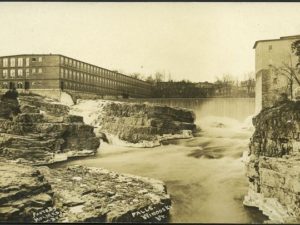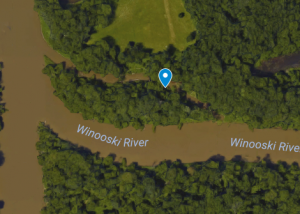Like much of 19th Vermont, the area along the banks of the Winooski River was cleared of trees to be used as farmland. The area was only 20% forested during the pre-civil war era. Towards the end of the 19th century, the dairy industry dominated the farmland along the river. The area was a major producer of butter and cheese for the Boston market. Throughout the 1900s, however, dairy and agricultural production decreased steadily in the region. The amount of land devoted to agriculture production dropped from 45% in 1950 to 12% in 1997 (Vermont Department of Agriculture Census). This transitioning of land use to residential use resulted in a large scale regrowth of forests.
The impacts of the booming dairy industry in the region can be seen in the natural area today. Many of the trees are large or medium, with very few small understory trees. This is an indicator of a recovering forest. Many of the tall trees, such as the silver maple which is common on the site, are very fast growing trees and are pioneer species. As the area continues to recover from deforestation, the species composition will likely change.
Many mills were built along the Winooski River, utilizing the flowing water to generate power for production. Some of these mills were outposts of the timber industry, which only furthered deforestation. Many others were textile mills. Some of these mills ended up selling the extra hydroelectric power they generated as a second source of income. These mills began to supplement agriculture as a major industry in the region, which allowed much of the land to become reforested.
Champlain Mills was a large textile mill built 1912 just a few hundred feet from my phenology site at Casavant. The mill is still standing today, it is now a shopping mall.

An image of Champlain Mills from the early 20th century

Aerial photo of the Casavant from 1937

Aerial photo of Casavant from 2017

